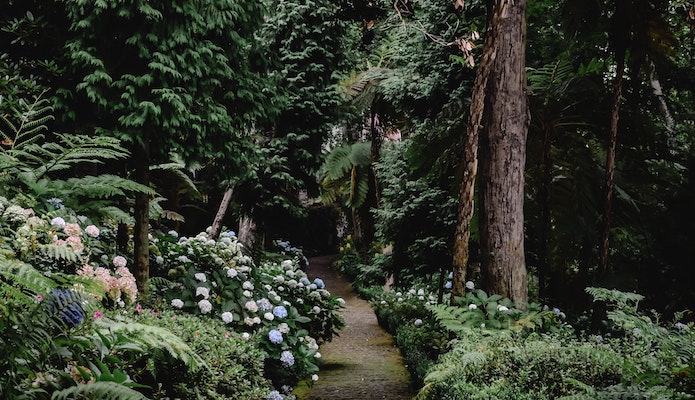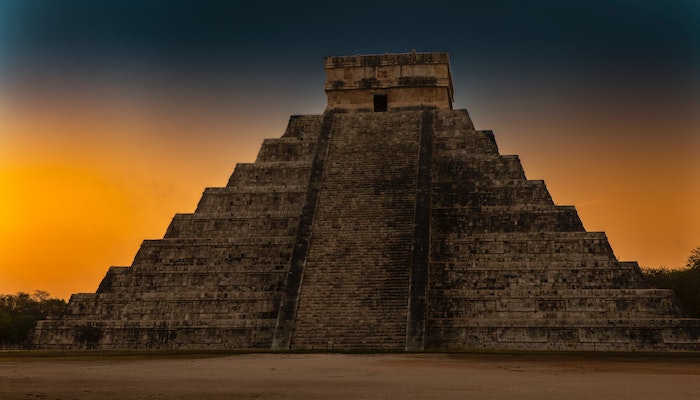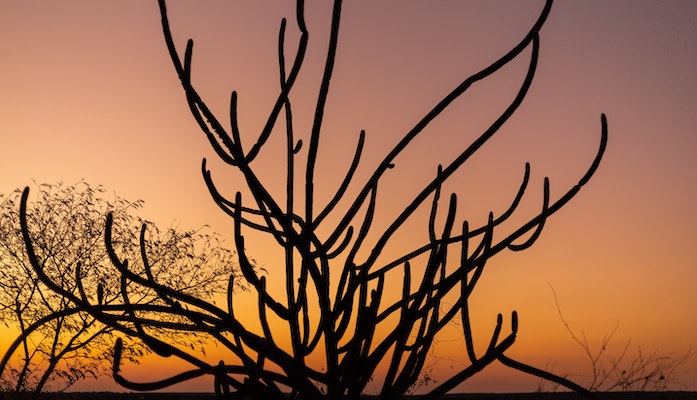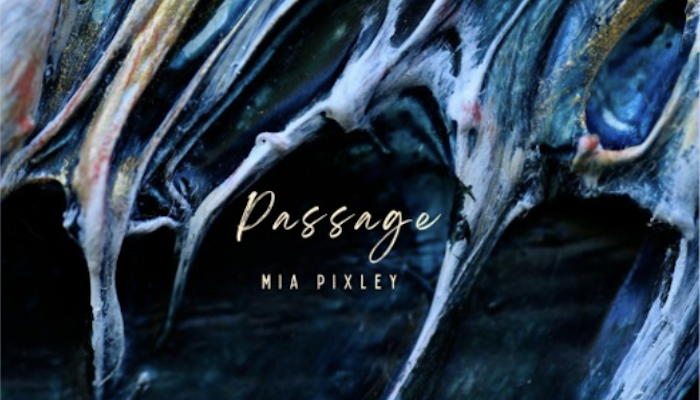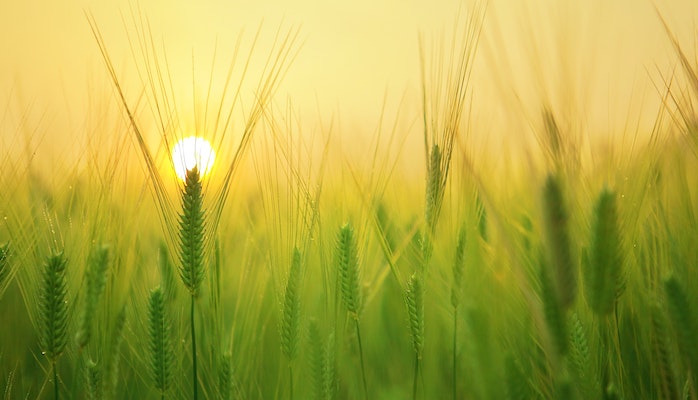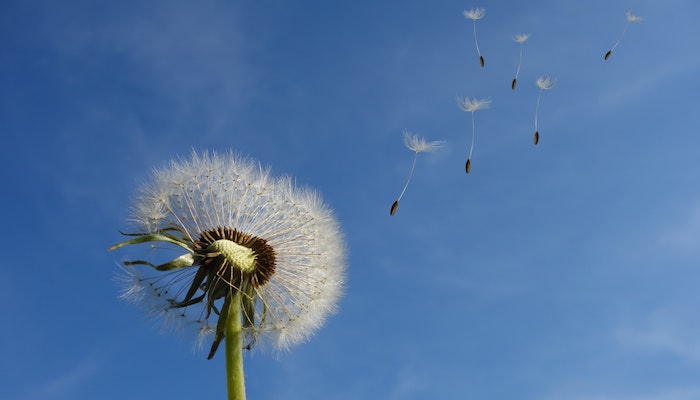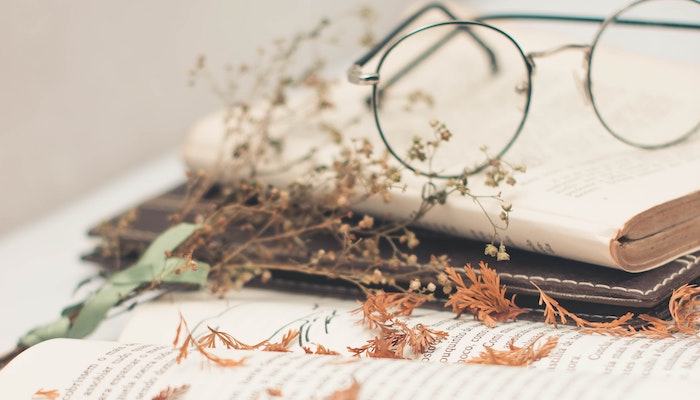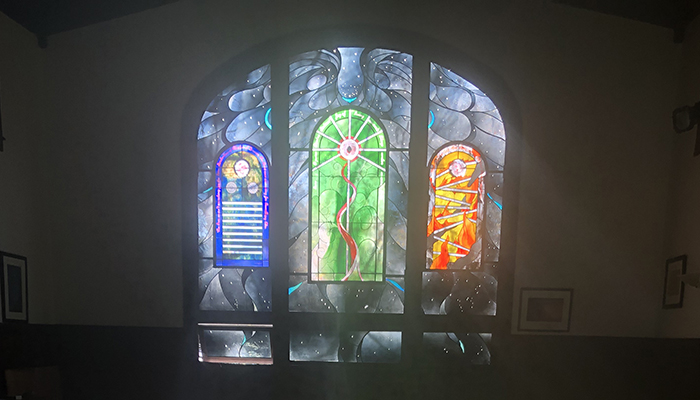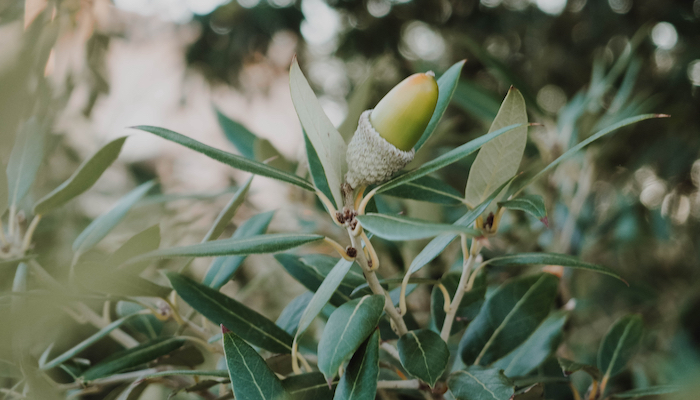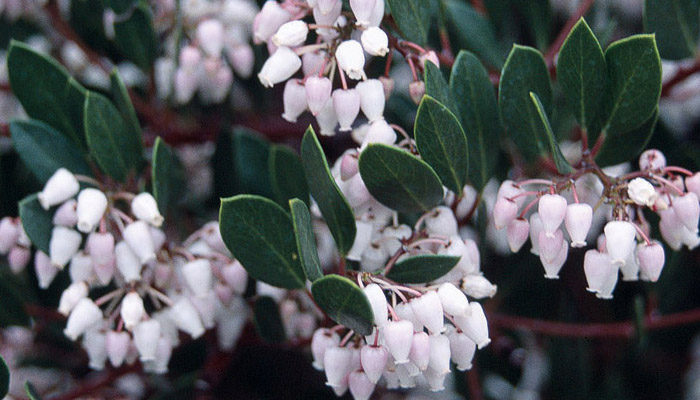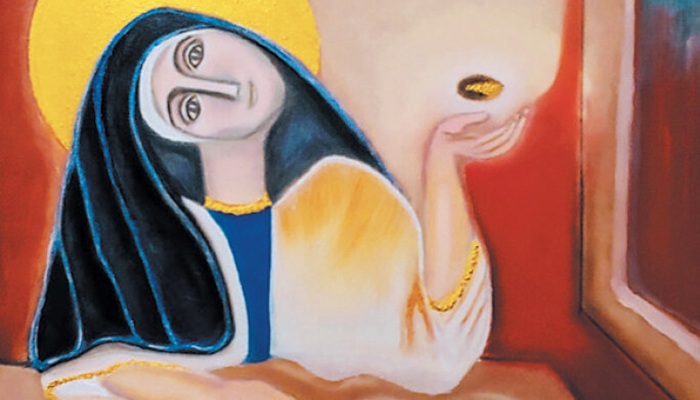Category: Inner Wisdom
Blog: New Beginnings, New Potentials at the Spring Equinox
By Isa Gucciardi, Ph.D.
Since December’s winter solstice season, when the days were shortest and the nights the longest of the year, the days have been growing steadily longer and the nights shorter. Now, at the time of the spring equinox, they are of equal length. The spring equinox is always a time of renewal and rebirth as the earth reaches this point in its relationship to the sun.
In the Sacred Stream Center garden, there is new growth – and new members of the plant community. We have several new pitcher sage plants which are known for their powerful healing capacities in restoring health and well-being. Their beautiful purple flowers are always at the height of their bloom during the spring equinox season. This year, we celebrate their coming as we celebrate the renewal of the year along with the new moon which dawns just after the equinox on March 20.
Article: Healing and Awakening with Buddhism and Shamanism
By Isa Gucciardi, Ph.D.
I’ve been exploring Buddhism and plant medicine and psychedelics for about six years now. One area that I find really absent in a lot of the conversations on psychedelics and spirituality is indigenous shamanism, and it’s hard to find people who know much about that, and also have some kind of Buddhist framework. That’s why I was so excited to hear about your work and listen to some of your talks.
The main question I’m working with in this book is how can we engage with plant medicines as tools or technologies to support awakening? How can we understand the psychedelic experience and also the outputs of psychedelics through a lens that is with the intention of awakening? When I heard about Depth Hypnosis and your work, I thought it would be amazing to talk to you and hear your thoughts on this. You’ve spoken about the catalytic power of shamanic practice and how you feel that there’s potential in that to be harnessed by Dharma practitioners in service of Awakening. This seems to be the focus of your work with Depth Hypnosis, so maybe we could start there.
Special Announcement: Mia Pixley’s Passage
Passage is an interdisciplinary call and response poetry, music, and prose project inspired by grief and created at the height of the pandemic. The project hinges around a single poem written by poet, scholar, and psychoanalyst, Forrest Hamer, Ph.D. Dr. Hamer sent me, a practicing psychologist, cellist, vocalist and composer, his poem, Passage, after I had asked if he had any poems about the ocean – the greatest destroyer, life-giver, and in many ways, teacher of loss. Held by his words, Hamer’s poem spoke deeply to my feelings of grief. And I was inspired to create a series of musical pieces from his single poem. Afterwards, I shared the music with him. He was, in turn, touched.
Blog: The Lessons of the Equinox, the Earth, and the Sun
By Isa Gucciardi, Ph.D.
The fall equinox this year occurs just before the new moon, marking the end of a cycle of growth as the agricultural growing season comes to an end. This year, the growing season ends just as the new moon begins a new cycle of growth. The equinox, of course, is the moment in the year when the day is as long as the night. Just as the moon’s influence begins to expand toward fullness, the sun’s influence wanes as the days become shorter. The sun continues on its path toward the winter solstice, the shortest day.
The dance between the moon and the sun at this fall equinox is one of growth and completion, increase and decrease, promise and reflection. The complexity of this dance is something we must all learn to hold in our awareness if we are to understand what the Earth might be trying to teach us through the complexity of this moment. We are challenged to understand the duality each celestial sphere expresses in relation to the other as we seek to find the moment of balance between them.
Blog: The Light of the Summer Solstice
By Isa Gucciardi, Ph.D.
The sun is strong in the garden now, as it is everywhere else. It remains directly overhead for most of the day, leaving the stained-glass windows in the sanctuary to sparkle their own colors without the sun’s influence. From the depth of the blue, to the heat of the sun, everything is intense right now. The COVID surge here in the Bay Area is at its highest since the pandemic began. The news from Ukraine tells us that the fighting is at its fiercest since the Russians began bombarding. Political polarization is at fever pitch over the Roe v. Wade decision by the Supreme Court. For a time known for the vividness of the light that comes with the longest day of the year, this year’s summer solstice seems to be providing us with more intensity than usual.
Article: Tonglen – An Integrated Energy Medicine Point of View
By Joanna Foote Adler, PsyD, CHT
Much has been written on the practice of Tonglen, the Tibetan Buddhist meditation practice of giving and taking. Tonglen is a powerful and important practice in many of the schools of Buddhism. I would like to offer some thoughts to add to this literature from the perspective of Integrated Energy Medicine as it is taught at the Foundation of the Sacred Stream, which will hopefully help to focus this practice for western practitioners in a skillful way.
Let’s start by defining Tonglen. Tonglen is a meditative practice for cultivating love and compassion through giving and taking. The focus in this practice is to embrace (rather than reject) unwanted and painful aspects of experience, and to work to overcome fear and develop greater compassion for others. The opportunity here is to change the attitude towards pain and to open the heart as one visualizes dissolving pain. In this practice, one uses the breath in conjunction with a specific visualization. One visualizes or imagines taking in the pain and suffering of others on breathing in, and then visualizes breathing out love and peace for the other.
Tonglen is a practice said to help develop wisdom and compassion on both the relative and absolute levels of reality as they are understood in Buddhist philosophy. These levels are known as the Two Truths. Talking about these levels of reality gets us into deep philosophical water, but for the purposes here we can understand that the relative level of existence refers to the everyday ordinary world experienced as solid and “real.” The ultimate level of reality in Buddhism points to the understanding that reality is actually “empty” in that it is always changing, and that all things depend on or originate from the causes and conditions that came before them. Tonglen points us towards letting go, towards releasing the clinging to our sense of self and to the attachment held when one believes they are permanent beings. In different ways on the relative and absolute levels, Tonglen practice can reverse resistance to pain and help develop the enlightened mind qualities of equanimity, love, and compassion in the face of suffering. The concepts of relative and absolute levels of reality are helpful here in the exploration of how Tonglen practice works.
As the Founding Director at the Foundation of the Sacred Stream, Dr. Isa Gucciardi teaches courses of study in Applied Buddhist Psychology and Integrated Energy Medicine, among others. She teaches that one way to understand Tonglen is as an energy medicine practice.
Article: The Unseen Teacher
By Isa Gucciardi, Ph.D.
Teaching and learning have never been separate for me. As a learner, I have always been keenly aware of the fact that I am being taught from within as I try to master a skill. I can feel the internal teaching change me in a different way than the external learning changes me. I remember being taught how to sight read as I was learning to play the piano. My piano teacher taught me the concept of matching the notes on the page with the notes on the keyboard, but when I read the notes on the page, I could feel an unseen teacher aligning me with the music. I was being taught how to play the piano, but I was also learning a new alignment to the world.
The experience of participating in learning in the external educational environment and receiving teaching from within simultaneously is a phenomenon that has revealed itself to me in different ways bit by bit over time. This experience has many facets to it, but it is always present in every teaching situation regardless of the subject being taught or whether or not I am ‘officially’ the teacher or the student.
Article: Addressing Self-Harm through Depth Hypnosis
By Joanna Foote Adler, PsyD, CHT
As a human beings, it is not uncommon to have experiences or feelings arise that we feel we cannot tolerate. Emotional pain can be incredibly hard to experience, and it is normal to reach for some way to cope in these kinds of situations. When a situation feels intolerably intense, people will naturally look for a way out of their suffering.
There are many ways to cope with suffering. They range from the most positive strategies, such as compassion, skillfulness, and love, to the quite negative, like self-blame, self-judgment, and self-harm. In these latter strategies people may mistakenly believe they are doing something about their experience by punishing or harming themselves. Perhaps they imagine that if they punish themselves enough, they will not continue to make choices that cause pain. Or perhaps they imagine that if they no longer exist in a body, they would be free of suffering. From a Buddhist point of view, this kind of thinking is seen as a fundamental misunderstanding, the kind of misunderstanding that actually leads to more harm and more pain, as negative coping strategies are piled on top of already existing suffering.
I would like to offer a few thoughts that may be able to help in these kinds of situations which ring true in the context of the spiritual counseling model of Depth Hypnosis.
Blog: Reflections on the Winter Solstice
By Isa Gucciardi, Ph.D.
As the nights have been growing longer as we approach the winter solstice, I have been reflecting on the relationship between light and darkness from a new perspective. We often think of light and dark as being opposite of one another. In some cases that is true. From one point of view, the light of day is the opposite of the dark of night. But from another vantage point, dark and light are moments of the same cycle of change. That cycle of change determines our experience of reality in utterly fundamental ways. The sun rising and setting is basic to our experience on earth. Yet, we don’t often think about the fact that the sun rising and setting dictates when and how we do almost everything we do. We may not often think about how our lives might be structured without this baseline rhythm the play of light and dark creates.
Blog: Reflections on the Fall Equinox
By Isa Gucciardi, Ph.D.
Around the fall equinox of 2018, as I was doing the fall garden clean up, I realized that a small California Live Oak had planted itself in the center of the garden at the Sacred Stream Center. I was very excited to have the oak choose our garden, but everyone else was worried that the oak would get too big and block out the other plants. I knew there was no way I would interfere with the oak’s plans, as we are visitors to its habitat – not the other way around.
Only 200 years ago, the land on which the Sacred Stream Center sits was covered in California Live Oak. The hills throughout California were dotted with these majestic trees, which can indeed grow very tall and spread their canopies widely. An oak taking up residence in that patch of ground would have had the flowing water of Strawberry Creek nearby and lots of laurel and bay trees keeping it company.
Blog: Equinox, Equipoise, Equanimity
By Isa Gucciardi, Ph.D.
The evening of the spring equinox, as I watch the shadows lengthen across the room, I reflect on how the magic of this play of light is around us everywhere, all the time. Many of us take for granted the sunrise and sunset. Indeed, we may not even notice the incremental lengthening of light throughout the late winter that brings us to this moment, where the day meets the night in equal measure.
On the equinoxes, the idea of balance always seems emphasized to me. How do we find our way to this moment of fleeting equilibrium each spring and fall? How well do we hold center in the tension of opposing forces around us at this moment of equipoise? These questions seem to take on more import now, when many of us are striving to counteract the effects of polarization that have increased in almost every aspect of our lives since the last spring equinox.
Article: Book Review: Julian of Norwich: Wisdom in a Time of Pandemic
By Isa Gucciardi, Ph.D.
Matthew Fox’s new book, Julian of Norwich: Wisdom in a Time of Pandemic is educational in many ways. Not only is it a revelation about a female Christian mystic whose wisdom should be more widely known, but it is a window into the history of 14th century Europe, and the long-lasting effects the bubonic plague had on society and culture. This book could not be more timely.
Reverend Fox has been an ardent preservationist of the mystic streams of thought within Christianity throughout his long career. He has kept this esoteric philosophy front and center in popular discourse in a way that has served thinkers from all traditions. He wrote the first modern book about Hildegarde von Bingen, the 11th century Benedictine nun who founded her own abbey and infused the work there with the fruits of her visions, her poetry, and her prophesy.
Like Hildegarde’s contributions, Julian of Norwich’s work informed Christian thought in ways which have not always been fully acknowledged or appreciated by the church. Both women’s offerings receive the attention they deserve through Fox’s efforts. In spite of the fact that Julian of Norwich’s Revelations of Divine Love is the earliest surviving book by a woman ever published, it is not widely read. Yet, her writings about her visionary experience and the ecstatic relationship with the Divine are still as profound, fresh and universal today as when they were written. We are lucky to have Fox point our attention to her reflections on her life and the times of plague through which she lived.

